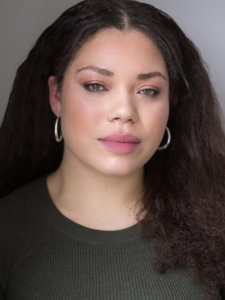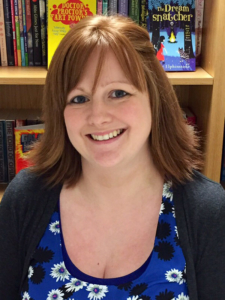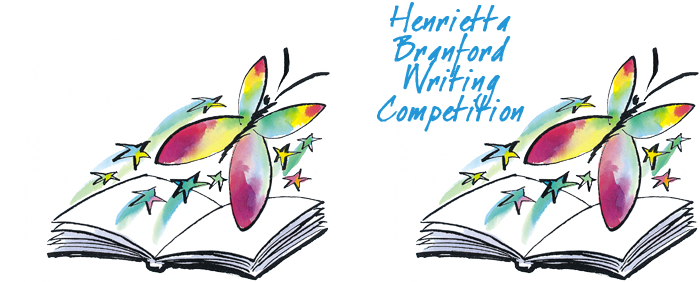Q&A with author Danielle Jawando

The Branford Boase Award judges were hugely impressed by your ability to create authentic, believable characters and were very moved by the story. Where and how did the book start and how did you go about creating the characters?
The book first started when I was studying for my MA in Creative Writing at the UEL. Back then, it was only Nathan’s story and I just remember this teenage boy with such a distinct voice wandered into my head. I wasn’t quite sure where the story was going at the time, or even what the story was, but I kept coming back to Nathan’s character, I couldn’t seem to shake him.
It wasn’t until I got onto the Megaphone Write Scheme many years later and sat down to write And the Stars Were Burning Brightly that everything began to fall into place. I worked as a teacher in an FE college for six years and was around teenagers all the time, so that really helped in terms of creating authentic, teenage characters. I try to make all of my characters (even the one’s we don’t like) as fleshed out as possible, by including different sides and aspects to them. They’re messy and vulnerable and make mistakes – even Nathan and Megan do! So, considering all those different aspects helped me to create characters who felt as raw and as real as possible. Jane also helped me with this, in terms of teasing out more of Nathan’s vulnerably and helplessness.
This is your first novel, but you are a successful playwright. Did your experience of writing for the stage influence the creation of the novel?
Definitely! I think that my experience writing for stage and screen really helped when creating And the Stars. It made me think carefully about the purpose of each scene in terms of what was happening and how it was moving the story forward or revealing something new to the reader. It also helped massively with my dialogue, too. I always want my dialogue to sound like real speech, that’s always been something that’s really important to me. So you’ll notice that the dialogue in the book often includes colloquial phrases or characters might trail off and be unable to finish their sentence. I also tried to make sure that each character had their own voice and their own unique way of speaking, which is definitely something I learned from writing scripts!
What was the thing you most enjoyed about working with your editor Jane on the book?
This is such a hard question because I really enjoyed every moment of working with Jane on this book. Jane is such an incredible editor, she is so kind and compassionate and very detailed. Not just when it comes to things like pacing and plot, but also the emotional depth of a story. Jane really got me to think about the different ways that people deal with grief and the impact that Al’s death had on all of the characters, from Nathan and Megan, to Phoebe and Lewi. She really helped me to dig-deep in terms of the emotion, which made me think about the characters in different ways. Jane also helped me to bring out themes that I didn’t even realise were there either, such as the toxic friendship between Megan and Tara, and Megan finally realising that she’s worth so much more than her friendship with Tara. Writing a book that deals with such dark subjects but that is also hopeful is such a tricky balance and Jane really helped with that, too. Jane really understood the book and the character and I loved how her edits made me think about the story, or what each person was going through, in a different way.
How important was it to you to write about the issues covered – bullying and suicide?
It was really important to me to write about the issues covered in And the Stars. Not just bullying and suicide, but also in terms of mental health and not being ashamed or afraid to seek help if you need it. I wanted to write the book that I desperately needed at fifteen but also one that I hoped would resonate with and help young people now. Books are such a vital tool when it comes to empathy and starting important/difficult conversations, which is something that I hope the book has done.
What advice would you give to young people wanting to write?
Keep going! Write about what inspires you, what you matters to you, what you want to say about your experience and the world. Know that your voice is important and never give up!
Q&A with editor Jane Griffiths

What most excited you about Danielle’s manuscript when you first read it?
There were SO many things that stood out to me when I first read And the Stars – the authenticity of the voice, the careful way that Danielle explored mental health, the palpable sense of grief and loss – but what I really responded to was the characters and how real they felt to me. I think that was especially true of Al. He actually only appears in the novel in snippets of flashbacks and quotes, but even so is a completely rounded character who you feel the absence of profoundly.
I still remember really clearly reading the manuscript on submission and having a sense that Al, Nathan and Megan were more than just fictional characters, it was as if they were real people whose story just needed to be shared and I knew I wanted to be the editor who got to work with Danielle to do just that.
What would you say are the key challenges about writing contemporary YA drama, especially with the themes covered in Danielle’s book?
I think with books that deal with difficult issues, like the bullying, grief and the mental health themes within Danielle’s novel, it’s so important to remember that there’s going to be a responsibility to readers to tackle topics with sensitivity, awareness and truth. Fiction can be a really powerful way of exploring hard subjects both by opening up different experiences and also allowing us to see things we’re going through reflected on the pages of a novel – and that can be really comforting, especially at times when you might feel alone or separate in some way from the world. I think the challenge for authors is to take difficult subjects and weave them into an engaging story that will draw readers in and challenge their thinking or bring them comfort without feeling didactic or overly bleak or as if the “issues” overtake everything else. Danielle does this so well, and I hope that readers come away from reading her book with a sense of hope, understanding and for some, a feeling of being seen.
What were the main things you worked on with her as editor?
We worked a lot together on the pacing of the story and looking at the key moments throughout to streamline and make sure that there was also a driving force throughout to keep readers turning the pages. Some of that came from bringing out the “mystery” element as Nathan tries to understand what led to Al’s death and some from bringing out more of the growing romance with Megan and some from Nathan’s own emotional journey and acceptance of his grief.
We also discussed the idea of lightness in the dark and key to that was adding more around Al’s ability to see beauty where others might not and specifically bringing that to life through his art. That then inspired the idea of making the art show a bigger moment for Nathan which in turn led to us discussing more about Nathan’s own dreams for the future and how we could share that with readers.
Another element was Nathan and Al’s family dynamics and giving more space to their mum and brother and sister. There wasn’t much of them at all in the first draft, but they were so brilliantly drawn that I wanted to know more and knew readers would too, so Danielle added some more scenes throughout and that really helped to bring out another side to Nathan’s character too.
What do you enjoy most about being an editor?
So many things! I love being able to work with authors to help them make them the best they can be, or reading submission to discover exciting new voices and talent as well as seeing authors you’ve worked with flourish and grow. But the role of an editor is so varied and each day can be totally different and that’s exciting too, and you get to work closely with most departments from design to production to marketing to sales to PR to rights, which means as an editor you always feel at the heart of every book you work on.
But ultimately, I think it always comes back to the stories and knowing that my job means I can be part of the publishing of a brilliant book that has the power to inspire a love of reading – that’s pretty special.
What do you think marks out the most successful YA writers?
Being fearless and open. I think the best YA (in fact the best books for any age-group) are written by authors who are passionate about the subject their writing about and are open to exploring new views or ideas. It shouldn’t be about following trends or writing something just because you think you should. Children are known to be harsh critics (!) and teenagers can be even more so, which means they can spot inauthenticity a mile off – the most successful writers aren’t afraid to forge their own path and stay true to the story they want to tell.
And the Stars Were Burning Brightly is published by Simon and Schuster, 978-1471178771, £7.99 pbk.
Thank you to Danielle Jawando and Jane Griffiths for answering our questions.



